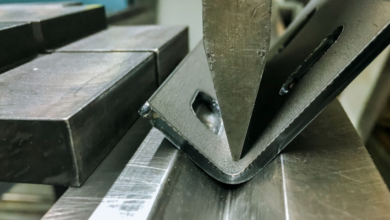Making The Right Choice: Things To Consider When Buying Junior Hockey Sticks

Finding the right fit when buying junior hockey sticks is essential to helping young players improve their skills and enjoy the game.
Junior hockey sticks are designed for players between the ages of 7 and 13, and the stick you choose can significantly affect their performance.
This guide will discuss the key things to consider when purchasing a junior hockey stick, ensuring the best balance of comfort, control, and performance.
1. Stick Length
The length of the hockey stick is one of the most important factors to consider. Too long or short sticks can affect a player’s ability to control the puck and execute shots.
The stick should ideally reach their chin for younger players to allow better puck handling. Remember that the right length will help balance shooting power and control.
A longer stick provides more reach and power for shots, while a shorter stick offers better control and maneuverability.
2. Stick Flex
The flex of a stick refers to how much it bends when pressure is applied, particularly during shooting or passing. Junior hockey sticks have various flex options that are lighter and more suitable for younger players.
Stick flex is generally measured by a number corresponding to how much force is needed to bend the stick 1 inch. For example, a stick with a 40 flex will require 40 pounds of pressure to bend.
Junior hockey sticks have lower flex ratings that bend more easily, unlike Senior hockey sticks. This is excellent for younger players who need help generating power in their shots.
3. Blade Curve
The blade curve affects how a player handles the puck and shoots. Junior sticks come with different blade curve patterns, each suited to different playing styles.
Open vs. Closed Blade: An open blade curve makes lifting the puck easier and helps take powerful wrist shots. A closed blade offers more control for stickhandling and passing.
Curve Depth: A deeper curve can help with puck control and shooting accuracy, while a shallow curve provides more versatility for passing and shooting.
Toe vs. Heel Curve: A toe curve is better for quick, precise shots, while a heel curve provides more control for slap shots.
The choice of blade curve depends on whether the player prioritizes shooting, passing, or stickhandling.
4. Stick Material
Junior hockey sticks are typically made from two materials: wood or composite. Each has advantages, and the choice often depends on the player’s skill level and personal preference.
Wood Sticks: These are generally heavier but provide a good feel for the puck. Wood sticks are also less expensive, making them a good option for beginners. However, they tend to wear out faster.
Composite Sticks: Made from materials like carbon fibre, composite sticks are lightweight and offer more power and durability. They are often preferred by more advanced players who want enhanced performance. However, they are typically more expensive than wood sticks.
5. Weight
Weight plays a significant role in how a player controls the stick. A lighter stick is easier to handle, allowing quicker movement and better puck control. On the other hand, heavier sticks may provide more stability and power.
Lighter Sticks: These are ideal for players who prioritize quick stickhandling and fast wrist shots. A lighter stick helps younger players move faster without feeling weighed down.
Heavier Sticks: These sticks can give the player more momentum when shooting, making them great for slap shots and harder wrist shots. However, they can tire out younger players more quickly.
6. Grip
Another consideration is whether to opt for a stick with or without a grip coating. A grip-coated stick has a tacky texture on the shaft, which can help players maintain a better hold, especially during intense gameplay.
Grip Coating: Provides extra traction and can be beneficial for younger players who may struggle to hold onto the stick firmly. However, some players may find the grip too sticky, limiting their ability to adjust their hands quickly.
No Grip: A non-grip stick allows for more effortless hand movement, allowing players to adjust their grip during play. However, it may be harder to maintain a solid hold, especially when gloves get wet.
Ultimately, the choice between grip and no grip depends on personal preference and the player’s comfort.
7. Price
Hockey sticks can vary widely in price, from budget-friendly options to high-end models designed for elite players. When buying a junior hockey stick, it is important to balance quality with affordability.
A mid-range stick can provide good performance without the hefty price tag of professional-level equipment for beginners or players still developing their skills.
Advanced players, on the other hand, may benefit from investing in a higher-quality stick that offers more durability and enhanced performance features like lighter weight or better flex.
Final Thoughts
Choosing the right junior hockey stick involves considering several factors, including length, flex, blade curve, material, weight, grip, and price.
By understanding these key elements and how they affect performance, you can help a young player find a stick that suits their playing style, enhances their skills, and makes the game more enjoyable.
Upgrade your game with Ting hockey sticks! Find the perfect balance of comfort, control, and performance for young players. Shop now and give them the tools they need to succeed!





